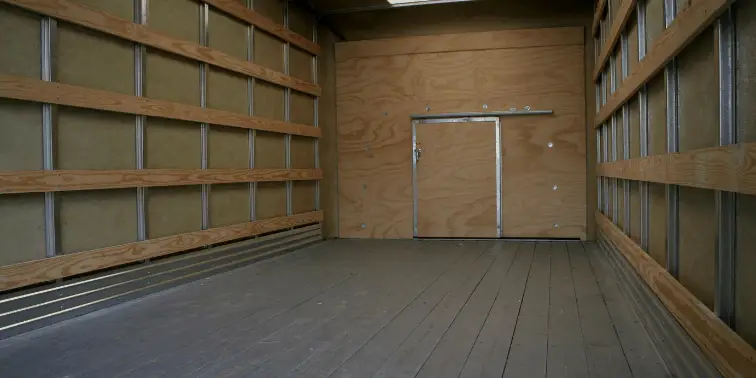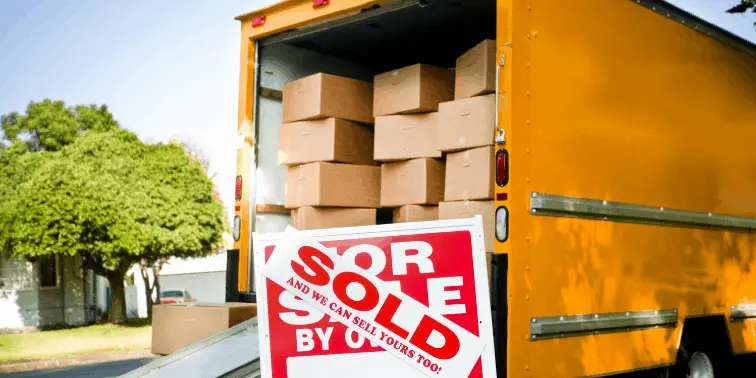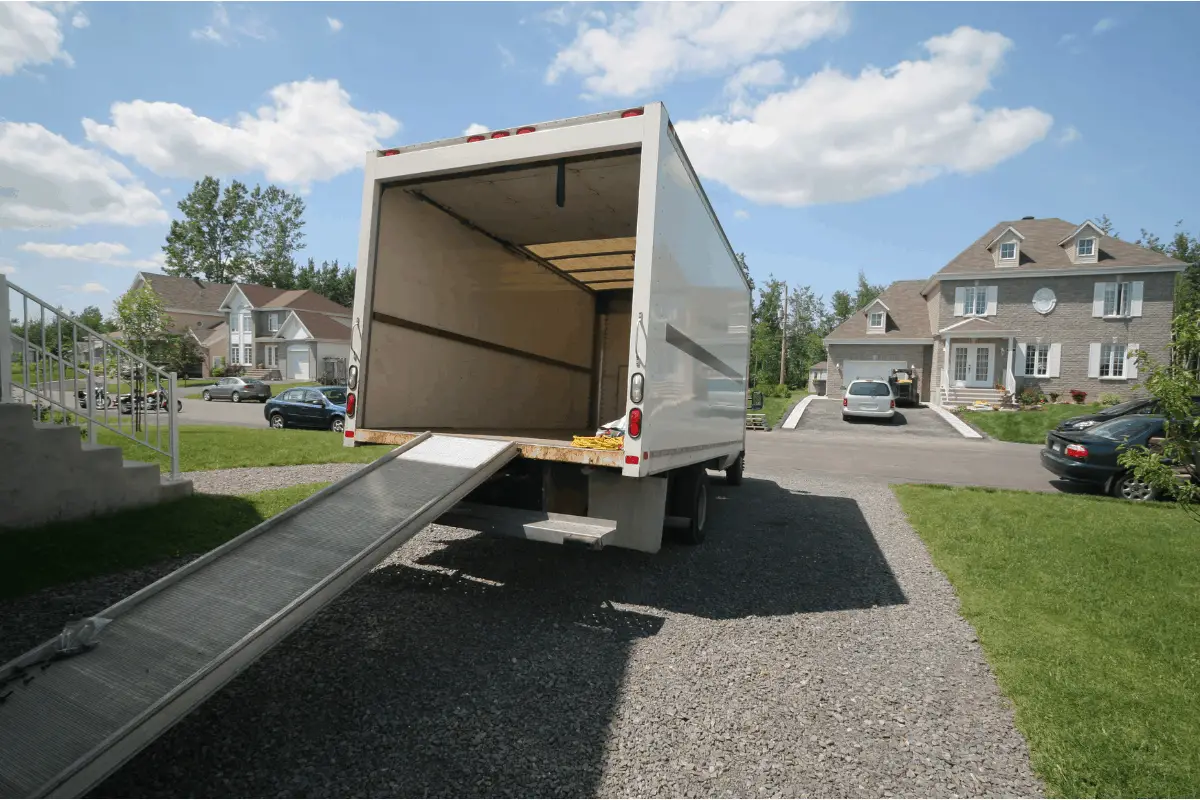Packing a moving truck is hard work. Not only is loading a truck labor-intensive, but there’s also a particular art to the whole process. I kept help but thinking I’m playing a giant game of Tetris every time I’m packing a truck.
Ideally, when you rent a moving truck, you will get a truck that is just large enough to hold all your belongings without running out of space. It is, of course, better to get a truck that is a bit too large rather than too small, but you also don’t want to spend extra money on a truck that you can only fill halfway.
The key to stretching your available truck space as far as possible is all in how you load it. Here are some tips to ensure that no valuable space will be wasted.
Table of Contents
Load in Tiers
Think of a loaded moving truck like a sliced loaf of bread. You have one large loaf, but it is comprised of equal slices of similar shape and size. This structure is similar to how you should load your truck.

Starting at the front of the truck, you want to build perfectly (almost) square tiers of furniture, boxes, and other assorted items that stretch from wall to wall and from floor to ceiling. You do not want to start building a new tier until the one in front of it is complete, and no space is left unfilled.
Once you’ve filled in space in front of the last tier you were working on, it’s usually impossible to go back and add extra. ALWAYS utilize every inch of space before moving on so you don’t end up leaving stuff sitting on the curb when it would have fit in the truck if you would have started using all your space from the get-go.
If your moving truck has a deck space above the cab, you should treat this the same way, except these tiers will, of course, be smaller than the ones in the main trailer space.
So, we know we should be loading the truck in tiers, but how should these tiers be built?
Furniture as a Base
Except for the deck space, each tier should ideally start with heavy furniture. Dressers, desks, armoires, chest of drawers, China cabinets, etc., should all be used as the first items in any tier in the truck until you’ve run out of these pieces to load.
This method provides a solid foundation that is both nicely square and sturdy. You should always ensure that you’ve already protected these furniture pieces from damage by wrapping them in moving blankets. (Check our Moving Supplies Guide to see all the supplies we recommend)
Chances are, you won’t have furniture that exactly fills the truck from wall to wall when placed side by side, and there will be a gap between one of the pieces and the wall. At this point, you want to use some heavy, sturdy boxes.
If it is a large gap, well-packed and solid boxes of non-fragile items. You can use small boxes of books or other small but heavy (and sturdy) boxes for a smaller gap. Bedframes, bikes and broken down shelve racks can also all work well in those thin gaps. It’s all about finding the proper Tetris piece for the space.
Pro Tip: If you have a kitchen table with removable legs, it isn’t a bad idea to leave a wall gap in 2-3 consecutive tiers that is just wide enough to slide in the tabletop and legs. This strategy is an excellent way to keep your tabletop—wrapped in moving blankets, of course—safe and to use your space efficiently.
You can even take this same approach in a single tier to provide a good place to stash an area rug, stood upright.
Pro Tip #2: Save your mattresses and box springs for the end. We will get to those later.
Second Layer
Your second layer (think vertically) of any tier can include small furniture or heavy boxes. Things like nightstands, end tables, and coffee tables are perfect here. Because the base is a solid piece of furniture, there is no risk of damage if your second layer is relatively heavy.

If you are using boxes for your second tier, try to use boxes of equal or similar size side by side, so they provide a good level surface for when you get to your next layer in the tier. Again, use moving blankets so your furniture doesn’t get scratched by sliding boxes sitting on top of it.
Like the base, you want to fill this layer wall to wall or as close as possible.
Third Layer and Beyond
From the third layer up and above, you want to primarily focus on medium to lightweight boxes, increasing from heaviest to lightest as you build up.
Note: If your base started with something tall like a dresser, then you may not have space for a third, or top, layer. Don’t try to force something that doesn’t actually fit.
Boxes of clothes are a good option in this middle portion of your tier, but anything light that you feel confident will not crush any boxes below is acceptable.
In this area, you may also use some very lightweight furniture like small bookshelves, sets of plastic storage drawers, etc.
The Top Layer
The top layer should be the final 2-3 feet below the ceiling of the trailer. It is in this area where very lightweight items should be stored. You should also utilize this space for things that are any shape but square since you will not need to stack anything else on top.
This top layer is also where you can load kitchen chairs laid on their backs with light boxes filling in any extra space left.
After you’ve completed this top layer, you’re likely to still have a gap of at least a few inches from the top. This space is the perfect place to store any light, narrow items that are loose. Brooms, rakes, and lamps (properly wrapped and protected!) are ideal candidates to fill in this space.
Pro Tip: Another good use for a moving blanket is to lay over top of some of these loose items. Moving blankets are heavy and will usually do a good job of holding some of these loose items sitting on the top in place.
With this top layer now complete, you should be looking at a nice square tier of boxes, furniture, and other household goods that reaches the ceiling. At this point, you need to repeat the same process to start building up your next tier.
We should note that you do not have to put straps across every tier to tie it off. Because there will be another tier behind it, everything will be kept in place. A pro mover will typically tie the load off somewhere around the midpoint of the truck, then again behind the very end of the load.
Tips for Couches, Loveseats, and Armchairs
Couches and other types of seating furniture can be difficult. They are heavy, bulky, and not always conveniently shaped. For these items—which should be protected with shrink wrap—you should always stand them (if possible) on their side rather than laying them flat as they are when they are in your home.
This orientation will make your tier building more manageable, and you do not have to worry about resting a lot of weight and potentially damaging items on the seat cushions.
If standing your couch upright isn’t an option then try to pair your couch with another couch or chairs that can be flipped upside down to fit directly on top. Finally, you can also hide some smaller boxes, and miscellaneous items in the cavity left between the back of the couch and the seat.
End with Mattresses and Box Springs
Earlier I had mentioned saving mattresses and box springs for the end. These are large and perfectly square items that are ideal for ensuring that the end of the truckload is securely squared off. Chances are your last couple of tiers aren’t perfect as you’re running out of just the right Tetris pieces to fill gaps.
This issue is remedied by using the mattresses on the back to ensure the load is nicely secured.
Final Thoughts
Loading a moving truck is a bit of a science, and there is a very particular order in which to load your belongings to utilize your space most efficiently.
The most important tip that I want to leave you with is this. Start packing your truck as if you’re not going to have enough room to fit everything in even if you think you’ll have plenty of room. Most people (we’ve been guilty of this as well) underestimate just how much stuff they actually have and how fast a moving truck can get filled up.
Don’t be flippant with your space and then find yourself panicking at the end. Maximize your efficiency from the very start and you’ll run into a lot less problems!

